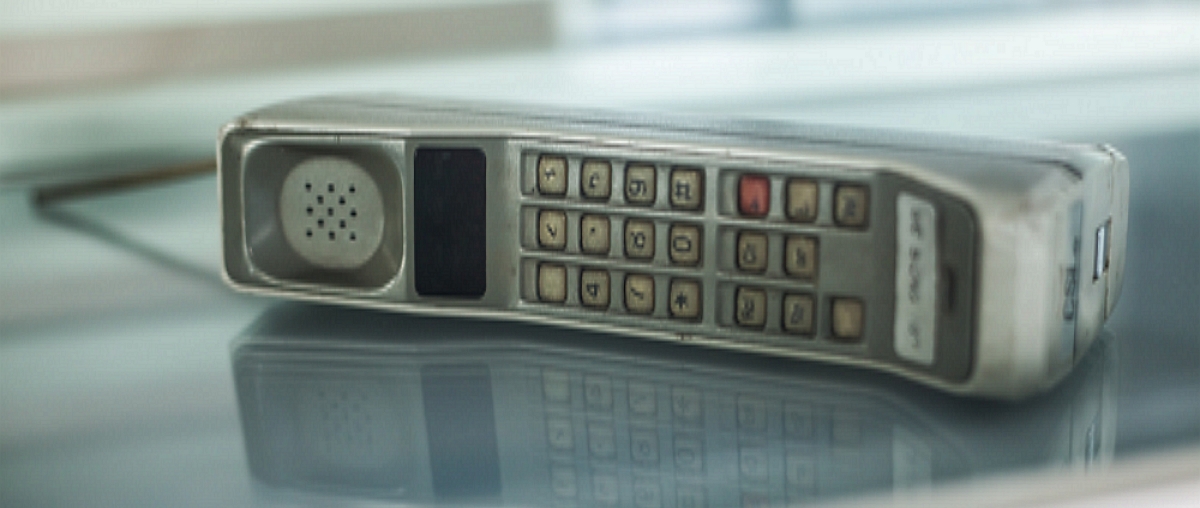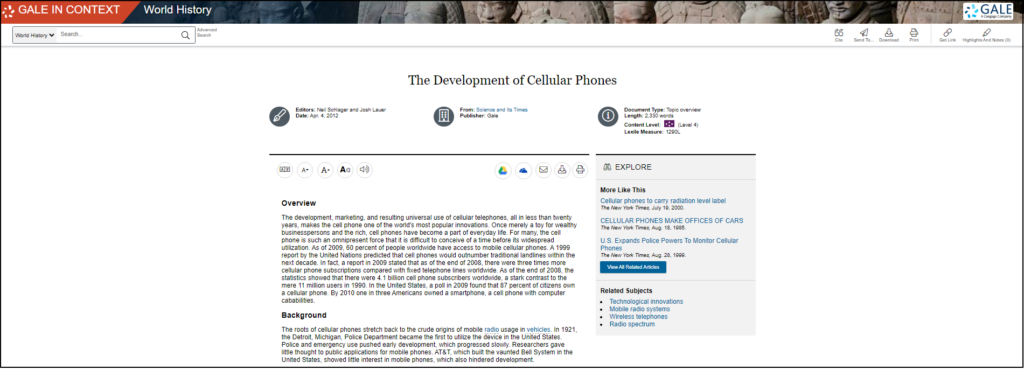| By J. Robert Parks |
For students who have grown up with cell phones and their conveniences, trying to understand what life was like before everyone had one can be a challenge. This week provides a useful teaching moment, as it marks the 50th anniversary of the first mobile phone call. On April 3, 1973, Motorola engineer Martin Cooper, sometimes called the Father of the Mobile Phone, stepped out of his office and used his two-pound DynaTAC prototype to call a rival engineer at Bell Labs to crow that he was calling from a “‘real’ cellular telephone.” Librarians and teachers will find a wealth of resources in Gale In Context: World History to help students understand the history of cellular phones and their cultural and scientific impact.
The genesis of mobile phones actually dates back to 1921, when the Detroit Police Department installed a simple mobile radio in its vehicles, but decades went by before there was much emphasis on developing the technology. For starters, AT&T, which controlled the telephonic infrastructure in the United States, had little interest in mobile phones. More importantly, it took innovations such as microprocessors and digital switching to lay the foundation for cellular phones.
In the 1950s and 1960s, scientists and engineers started experimenting with different approaches, but in the United States those were hindered somewhat by a lack of enthusiasm from the Federal Communications Commission (FCC), which needed to open the frequencies on the radio spectrum for the technology to be tested and introduced commercially. In fact, it took several years after Cooper’s first phone call for AT&T to operate a model cell system, and it wasn’t until 1978 that testing began in Chicago. That meant that the commercial cell phone network ended up being introduced in Tokyo in 1979.
In an enjoyable 2019 interview with Cooper about his early mobile phone, he describes how the prototype he used was one of only two in existence and had been put together by an engineer from thousands of parts. When a reporter noted that the battery only lasted 20 minutes, Cooper retorted that the phone was so heavy you would not use it for any longer than that. Nonetheless, once the DynaTAC came into commercial use in 1983, it was immediately popular. The phone cost almost $4,000, and charges and calls were expensive—there were no unlimited minutes in those days. Within a year, however, it had 12,000 subscribers.
Many of the improvements in mobile phones have come from Japan, where its citizens embraced the possibilities of cellular phones early on. It was one of the first countries to install the third-generation (3G) system, and the Japanese were early adopters of text messaging, camera and video phones, and using phones to play music. In the first decade of the twenty-first century, Japan was often three years ahead of the United States in cell phone advancements.
Early users of mobile phones tended to be businesspeople who used the phones to make themselves more productive. Other users appreciated the sense of safety a mobile phone gave them. If their car broke down somewhere, it would be easy for them to call for help. Over time, as cell phones became more common and then practically a necessity, they have transformed society. The shift away from calls to text messaging has changed the way we communicate, and people now expect to be able to be in touch wherever they are, with whomever they want. That expectation alone has changed our ideas of community, obligation, and time.
About the Author
J. Robert Parks is a former professor and frequent contributor to Gale In Context: U.S. History and Gale In Context: World History who enjoys thinking about how our understanding of history affects and reflects contemporary culture.




